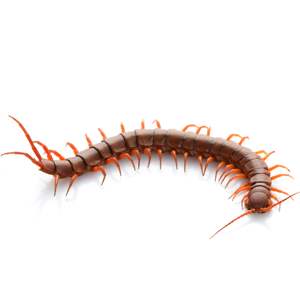Cookeville: 931-372-7676 Crossville: 931-484-0085 Sparta: 931-836-1131
| |

Centipedes and millipedes are not insects because they have more than six legs, but they are closely related invertebrates. When outdoors, these invertebrates are innocuous organisms, but they may be considered pests when they share living space with us. Both of these groups of invertebrates have long, segmented bodies with either one pair (centipedes) or two pairs (millipedes) of legs on each segment. Their food preferences vary greatly.
Centipede
Centipedes Description:
Centipedes have a pair of poison claws behind the head and use the poison to paralyze their prey, usually small insects. However, the jaws of centipedes are weak and can rarely penetrate human skin. The rare individuals who are bitten may experience localized swelling and pain no worse than a bee sting.
Centipede Habitat:
The house centipede is found throughout the United States. This centipede can be found outside under stones, boards, or sticks or beneath moist leaf litter and other organic matter. When disturbed, centipedes move swiftly toward darkened hiding places. When they are found in homes, they are often found in moist basements, damp closets and in bathrooms. Centipedes require moist habitats. If they are plentiful, there may be an underlying moisture problem that should be corrected.




